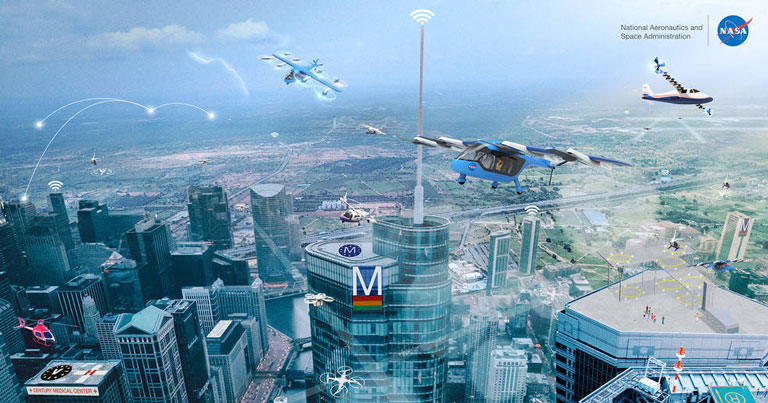
NASA has announced that it is updating the terminology used to define Urban Air Mobility (UAM) to Advanced Air Mobility (AAM). The new terminology will include a more comprehensive view of the future of airspace mobility, according to NASA.
Davis Hackenberg, AAM Mission Manager, NASA, explained: “To be clear, in this move we’re primarily talking about updating the words we are using to describe our efforts. We are still doing UAM work, but now we consider it part of a bigger picture we call Advanced Air Mobility.”
During the past few years the idea of using unmanned aircraft systems (UAS), or drones, and small, piloted electric-powered vehicles has really developed, and the initial attention has widely been focused on their use in the skies over dense urban landscapes.
“That’s where the early market studies showed there was a realistic potential for a high payoff on investment. Large cities offered a high population of customers using many types of services and promised a positive influence on the economy,” Hackenberg said.
“From this emphasis of flying UAS over larger cities we sort of naturally branded it Urban Air Mobility and it stuck. This was late in 2017, but it didn’t take long before we got the sense that maybe ‘urban’ wasn’t the perfect word.”
NASA has stated that as it continues to lead discussions and host technical demonstrations with its industry partners, it has reached a conclusion that there is a much broader interest in these capabilities. UAM-related services could benefit everyone, not just those who live in a big city.
This was most recently emphasised in a recent report by the National Academies of Sciences, Engineering and Medicine entitled “Advancing Aerial Mobility – A National Blueprint”. According to NASA, the decision to use the word “advanced” instead of “urban” was intentional and echoed the view that UAM is more than just for urban dwellers.
“We knew this all along, of course. UAM was never meant to be just for midtown Manhattan, but we had implemented this term and gotten used to it. Finally, we decided it was time to start talking about this in a new way,” Hackenberg said. “Industry was telling us this, the National Academies made it clear in their report, and we were talking about it internally, so it was decided now is the right time.”
Moving forward, UAM-related work will continue as a subset to the overall AAM mission, which has defined two categories of operations based on the distance planned to be flown: local and intraregional. Local flights will be considered as starting from any single point and then extending out about 50 miles and back, while intraregional flights will be longer flights, for instance from Philadelphia to New York City.
“So, our UAM work will continue in our thinking as being local, except there will be more buildings and people involved, as opposed to that starting point and 50-mile radius being in a more rural area,” Hackenberg said.







